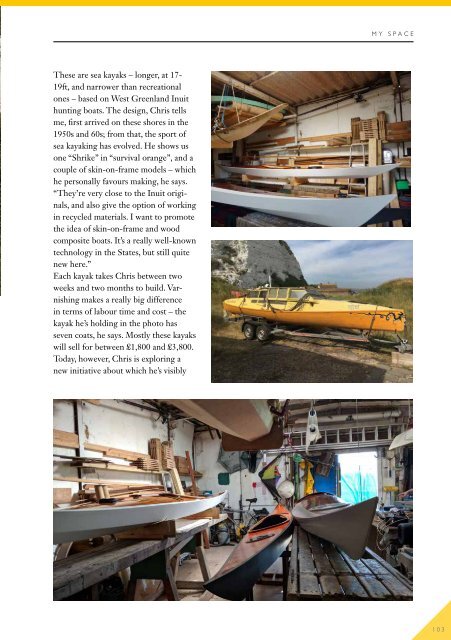Viva Lewes Issue #153 June 2019
You also want an ePaper? Increase the reach of your titles
YUMPU automatically turns print PDFs into web optimized ePapers that Google loves.
MY SPACE<br />
These are sea kayaks – longer, at 17-<br />
19ft, and narrower than recreational<br />
ones – based on West Greenland Inuit<br />
hunting boats. The design, Chris tells<br />
me, first arrived on these shores in the<br />
1950s and 60s; from that, the sport of<br />
sea kayaking has evolved. He shows us<br />
one “Shrike” in “survival orange”, and a<br />
couple of skin-on-frame models – which<br />
he personally favours making, he says.<br />
“They’re very close to the Inuit originals,<br />
and also give the option of working<br />
in recycled materials. I want to promote<br />
the idea of skin-on-frame and wood<br />
composite boats. It’s a really well-known<br />
technology in the States, but still quite<br />
new here.”<br />
Each kayak takes Chris between two<br />
weeks and two months to build. Varnishing<br />
makes a really big difference<br />
in terms of labour time and cost – the<br />
kayak he’s holding in the photo has<br />
seven coats, he says. Mostly these kayaks<br />
will sell for between £1,800 and £3,800.<br />
Today, however, Chris is exploring a<br />
new initiative about which he’s visibly<br />
103


















